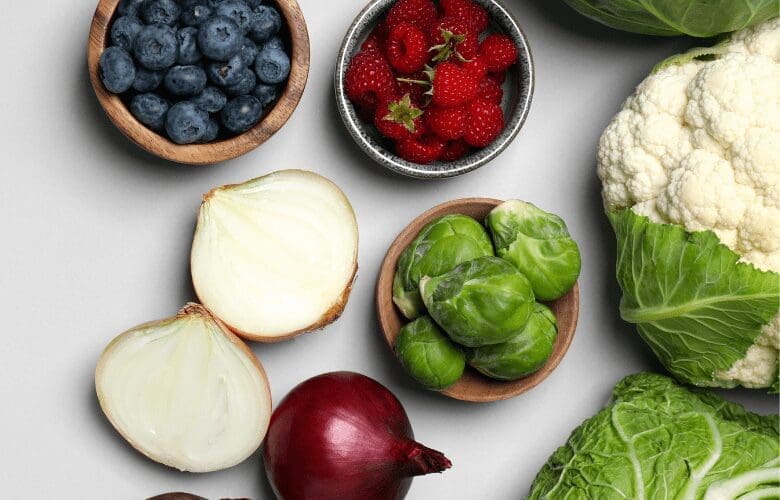Boost Your Gut Health: Harness the Power of Pre, Pro, and Postbiotics
Chances are, you’ve heard about the hype surrounding prebiotics and probiotics and how they keep your gut in tip-top shape. But have you heard of postbiotics? This lesser-known player is rightfully gaining attention for its powerful role in digestive health. So, read on and get ready to supercharge your gut health with the incredible power of pre, pro, and postbiotics. Together, these three crucial components can provide a plethora of benefits to your gut microbiome and your overall well-being.
So what are pre, pro, and postbiotics?
Your gut is teeming with millions of tiny helpers that keep your body in excellent condition. These microscopic friends are none other than your gut bacteria, and they need to be fed just like you do. However, they can’t digest fiber as you can. That’s where prebiotics come in.
Prebiotics are like a gourmet meal for these helpful microbes, giving them the fuel they need to thrive. By providing this nourishment, they help to cultivate the growth of good bacteria while keeping the bad ones in check. It’s like a garden in your gut, and prebiotics are the fertilizer that helps good plants grow strong and healthy.
And if you’re looking to kick your gut health into high gear, enter probiotics! These live microorganisms offer a host of benefits, from boosting the immune system to aiding digestion. And that’s not all — a 2013 study has shown that probiotics can also work wonders for:
- cholesterol reduction
- cancer prevention
- acute diarrheal diseases
- lactose intolerance
- and more!
And what exactly are postbiotics, the newer player in town? Postbiotics are the byproducts of the interaction between pre and probiotics. They can contain a wealth of nutrients like vitamins B and K. A 2021 study revealed that postbiotics have a wide range of properties, including boosting the immune system to fighting inflammation, oxidative stress, and even cancer.
See how pre, pro, and postbiotics are crucial to give your gut the ultimate boost? By nourishing your digestive system with these powerful components, you can support a thriving microbiome and enjoy all the benefits that come with it.
Types & Sources of Pre, Pro, and Postbiotics
Prebiotic Types and Sources
Prebiotics are primarily found in plant-based foods that are rich in fiber, making them conveniently obtainable on a day-to-day basis. Most prebiotics are categorized as oligosaccharide carbohydrates — a type of carbohydrate made up of a few sugar molecules linked together, including:
- Fructans – are naturally found in many fruits, vegetables, and grains. Some common sources of fructans include bananas, garlic, onion, asparagus, wheat, and rye.
- Galacto-oligosaccharides (GOS) – are commonly found in dairy products like milk and cheese and legumes like chickpeas and lentils.
- Starch and glucose-derived oligosaccharides – are derived from starchy sources like corn, potatoes, and rice.
- Other oligosaccharides – One type of oligosaccharides is xylooligosaccharides, which are found in wheat bran, barley hulls, almond shells, and corn cob, straw, and mannan-oligosaccharides, which are found in yeast.
But did you know that you can also take prebiotics as supplements? That’s right! Inulin and oligosaccharides are two examples of prebiotics you can purchase in supplement form. And here’s another interesting fact — prebiotics can also be added to probiotic supplements to enhance their effectiveness.
Probiotic Types and Sources
Many supplements and fermented foods are rich in probiotics. But not all probiotics are created equal. To be genuinely a probiotic, a food product must contain a sufficient amount of active bacterial cultures that have been shown to provide health benefits. Be sure to check the label to ensure they contain live cultures, so you can give your gut the love it deserves!
The following are common types of probiotics:
- Bifidobacteria – similar to other probiotic bacteria, this probiotic form can be created externally and taken as supplements. Some foods rich in this bacteria include dandelion greens, Jerusalem artichokes, kefir, fermented foods like kimchi, tempeh, miso, pickles, cured meats, certain wines, and some types of vinegar.
- Lactobacillus – resides in the gut, mouth, and even in the vagina. But aside from the natural colonization of this bacteria in your body, your diet plays a crucial role in maintaining its population. To keep this good bacteria happy and thriving, add foods like yogurt, sauerkraut, kefir, sourdough bread, and kimchi to your menu.
- Saccharomyces – a useful variety of yeast, often present in probiotic supplements. It has also been discovered in different sources like lychee and mangosteen fruits, as well as in dairy products such as kefir and fermented tea, known as kombucha.
Postbiotic Types and Sources
There are several types of postbiotics and these include:
- Short-chain fatty acids (SCFAs) – are generated through the fermentation of fiber in your colon by beneficial bacteria and serve as the principal energy source for the cells that line your colon.
- Enzymes – proteins that break down complex food molecules into simpler ones so your body can absorb them more easily.
- Cell wall fragments – small pieces of bacterial cell walls that can stimulate your immune system and have been shown to have anti-inflammatory effects.
- Lipopolysaccharides – complex molecules that are part of the outer membrane of some bacteria for protection against toxins.
- Exopolysaccharides (EPS) – substances that microorganisms secrete, which can form a protective barrier around the bacteria and are known to have prebiotic effects.
- Bacterial lysates – mixtures made from bacterial components that can boost your immune system and have been used for their immune-modulating effects.
- Cell-free supernatants – compounds produced by bacteria and yeast that can have anti-inflammatory and immunomodulatory effects.
- Other metabolites such as amino acids and vitamins – play key roles in various biological processes such as digestion, growth and repair of body tissues, and energy release and storage.
Because postbiotics are produced through the process of fermentation, probiotics serve as the main source of postbiotics. In addition to the probiotic-rich foods mentioned above, other foods containing probiotics and can help increase the level of postbiotics in your gut include:
- Buttermilk
- Some cheeses
- Sauerkraut
- Sourdough bread
- Flaxseed
- Oats
- Seaweed
Although postbiotic supplements are less common than prebiotics or probiotics, you can still find them in select health food stores and online retailers. The good news is, you don’t necessarily need to take postbiotic supplements to reap their benefits. In fact, you can naturally increase your body’s postbiotic levels by consuming more prebiotic foods and probiotics.
The Bottom Line
Are you ready to take your gut health to the next level? The dynamic trio of pre, pro, and postbiotics may be the answer you’re looking for. Incorporate them in your arsenal of gut-friendly goodies to revolutionize your gut health and transform your overall well-being. However, before you jump in, seek personalized advice from a qualified practitioner to avoid trial and error. Say goodbye to digestive woes and greet a happier, healthier version of yourself!













